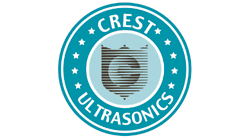Understanding Ultrasonic Cleaner Degas
|
Let Us Help We can help you
find the perfect storage unit for your needs and budget. |
When you prepare fresh batches of ultrasonic cleaning solutions an unwanted ingredient is dissolved air, sometimes called entrapped air. Evidence of dissolved air is demonstrated by leaving a glass of water on your nightstand, then observing bubbles on the water glass in the morning. Dissolved air interferes with ultrasonic cleaning efficiency, as explained below, which is why an ultrasonic cleaner degas step should be performed.
Ultrasonic Cleaner Degas - Getting the Air Out
Just as dissolved air is in your nightstand water glass so it is in freshly prepared ultrasonic cleaning formulations that can be 90% or more water. Examples are provided by the cleaning solution chemicals offered on our website such as the widely used elma tec clean A4. Its recommended dilution is to 5 to 10% with water.
Bubbles clinging to objects immersed in the ultrasonic bath can also introduce air into the solution. Examples are parts spray washed to remove loose contaminants before being lowered into your ultrasonic cleaner.
In large ultrasonic cleaner tanks such as the 23.5 gallon Elmasonic Select 900 this can represent a lot of air to be removed by ultrasonic cleaner degas.
But degassing is important regardless of the size of your ultrasonic cleaner.
Ultrasonic Cleaner Degas: Why Get the Air Out?
Air and other gases contained in a freshly filled ultrasonic cleaning bath (or one remaining idle for a period of time) interfere with the performance and efficiency of your ultrasonic cleaner.
As explained in our post how ultrasonic cleaners work, ultrasonic cleaning is accomplished by the energy released from the violent and rapid formation and implosion of microscopic vacuum bubbles. The process is called ultrasonic cavitation.
These mighty bubbles blast loose and carry away the contaminants attached to the products you are cleaning.
Bubbles and dissolved air in the cleaning liquid absorb ultrasonic energy and inhibit the implosion of these cavitation bubbles. This significantly reduces cleaning efficiency with its attendant impact on cleaning line throughput. And the impact on efficiency increases with the size of an ultrasonic cleaning tank.
Ultrasonic Cleaner Degas Procedures
There are options on degassing an ultrasonic cleaning solution.
If you have an inexpensive benchtop ultrasonic cleaner used on an occasional basis, an ultrasonic cleaner degas can be accomplished relatively easily. Simply prepare your cleaning solution in your ultrasonic cleaner tank following dilution instructions. Turn on your unit and operate it for 10 to 20 minutes without a load.
Degassing is indicted when the swirl of air bubbles ceases.
A more practical, energy-efficient solution is to use an ultrasonic cleaner equipped with a degas and/or a pulse function and carry out the process in advance of the cleaning operations.
A degas mode accelerates the removal of air contained in cleaning solutions by introducing short breaks in the ultrasonic operating cycle. This allows coalesced gas bubbles to rise to the surface and burst.
A pulse mode provides brief spikes in ultrasonic power that not only performs an ultrasonic cleaner degas but also speeds the removal of stubborn, strongly adhering contaminants. Pulse is also useful when an ultrasonic cleaner is used for mixing and sample prep in the lab.
Equipment Examples Performing Ultrasonic Cleaner Degas
As suggested above, some low-cost ultrasonic cleaners, perhaps used by hobbyists, may be operated by a simple on-off switch.
But where ultrasonic cleaning or using ultrasonic energy for operations such as sample prep in the lab, units offering a degas function, a pulse mode or both should be considered.
Here is a brief listing of Elmasonic benchtop equipment with ultrasonic cleaner degas or degas by the pulse method available from iUltrasonic.
| Series | Degas | Pulse | Models | Capacities (gallons) |
| Elmasonic E Plus | ✓ | 9 | 0.25 - 7.5 | |
| Elmasonic Select | ✓ | ✓ | 11 | 0.75 - 24 |
| Elmasonic P | ✓ | ✓ | 6 | 0.75 - 7.5 |
| Elmasonic xtra TT | ✓ | 4 | 0.79 - 4.8 |
In Summary
Degassing a fresh ultrasonic cleaning solution before initiating a cleaning cycle will greatly improve the efficiency of your operations.
It can be accomplished two ways: Operating your unit without a load for a period of time, the length of which depends on the volume of your cleaning tank.
And this easily avoided loss to productive cleaning time is repeated each time you replace spent ultrasonic cleaning solution.
A better method is using an ultrasonic cleaner equipped with a degas mode or a pulse mode (or in some cases both). Pulse adds functionality when you are removing highly tenacious contaminants or processing samples in the lab.
Contact the scientists at iUltrasonic expert advice on selecting the best ultrasonic cleaner for your requirements. Rely on them also for tips on selecting the right cleaning solution chemicals to get the best performance from your equipment.






